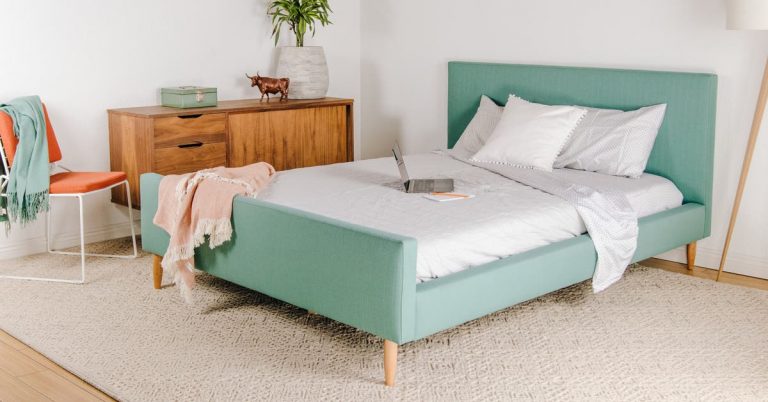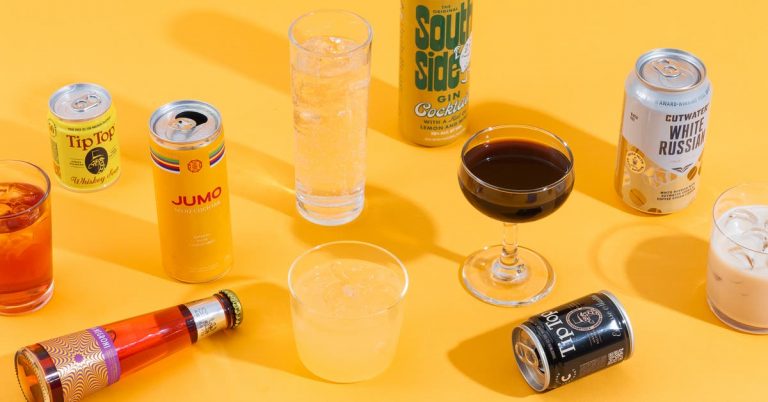The Best Patio Furniture (And How to Shop for It)
Most people select outdoor furniture based primarily on aesthetics and the style of their home. But before you fall in love with the way a piece looks, consider how well it will wear over the course of many seasons (and how much you’re willing to maintain it). Some materials—like wood—require annual maintenance to keep them looking good, while others can weather the elements for years without any upkeep. Colder and wetter regions introduce issues of rot and rust, making resin-wicker and plastic-resin construction the more prudent options—unless you’re committed to the regular care required by wood and metal.
Wood

All of the designers we consulted cited teak as the gold standard of wood for outdoor furniture, noting a well-made teak piece could last for decades. Of course, you’d need to purchase high-quality teak; the wood is rated in three grades—A, B, and C—with only the first grade considered truly weather-resistant without regular protective treatments. Calvin Abe, principal architect at the design firm AHBE, also praised the tropical hardwood ipe. Meanwhile, furniture designer Aaron Van Holland noted that acacia’s abundance makes it one of the more affordable options widely available.
Among popular outdoor-furniture materials, wood generally requires the most maintenance. “Rain and moisture causes wood to swell and shrink. Temperature does that too, and UV rays are just hard on everything,” landscape designer Maggie Lobl told us. Russ Cletta, also a Southern California landscape designer, said, “Any wood that’s outside is going to require almost annual maintenance.”
You can clean a wood table with a mild soapy solution if needed. Usually, though, a small hand brush should suffice for removing outdoor debris and wayward crumbs from the surface. (And please do use a brush: One of our writers once vigorously wiped bird seeds off their wood picnic table, and they impaled a nearly 2-inch-long splinter into their palm, resulting in stitches and a tetanus shot.) Using a protective waterproof cover before rain and snow will likely extend the furniture’s life. Depending on the degree of your outdoor furniture’s exposure to the elements, you might want to sand and stain or oil the pieces once a year or once every couple of years. With most hardwoods, you can also choose to forgo staining and simply allow your wood to weather to a silvery gray.
Metal

What rot is to wood, rust and corrosion are to metal. The metal dining sets and sofa frames you encounter may be made of steel (bring along a magnet while shopping to check for steel-made parts), cast aluminum, or even stainless steel. Most pieces are treated with rust-resistant coatings, and our research found that few people experience any rust problems within the first few years of buying a new set. When rust does form, it’s usually discovered in areas where moisture is more apt to pool or slowly evaporate, like the underside of chairs and tables. (Look for sets equipped with stainless steel screws and hardware, for additional protection against corrosion.)
Regular cleaning requires only a mild soapy solution—say, 1 tablespoon of liquid dish soap to 1 gallon of water. You can also hose off this type of furniture (after removing any cushions). If rust spots form, you can usually sand or scour them off with sandpaper or steel wool. And repainting is always an option (spray paint often works well; getting a color-matched touch-up paint at the time of purchase is an even better plan). Many reviewers say they’ve had success with Rust-Oleum.
The high-end designers we spoke with identified cast aluminum as the most popular type of outdoor metal furniture today. It has the advantage of being very lightweight, strong, and easy to clean.
Resin wicker

The popularity of this modern answer to traditional wicker furniture has exploded in recent years, with slick, basket-like textures found everywhere from rooftop bars to beachfront resorts to suburban backyards. “Wicker” itself is not a specific material but refers to a flexible material, natural or synthetic, that is woven to create said furniture. Your grandmother’s wicker might have been made from willow branches, bamboo, rattan, or reeds. Today’s resin wicker—also called “all-weather wicker”—is generally made of steel or aluminum wire wrapped with a paper or plastic material. You’ll want to look for pieces made with high-density polyethylene wicker, not cheaper PVC, which unravels easily (cheaper PVC is recognized by its shinier and tacky-feeling finish). The material is lightweight, stain- and UV-resistant, and exhibits exceptional tensile strength (which keeps the simulated strands tightly woven). It also won’t stick to the skin like cheaper PVC alternatives.
One reason for resin wicker’s popularity is its easy upkeep. Just wipe it down with a damp cloth, soapy or not—or pull out the hose for a tougher job. This type of furniture is often used in sunrooms, as well as on patios and deck areas. Companies sometimes recommend that such outdoor furniture remain covered when not in use to protect the plastic resin from UV damage (which will eventually lead to deterioration or breakage).
Plastic resin
Just because plastic does not rust, warp, or rot like other material options, that does not mean plastic does not require any maintenance. But of all materials, plastic-resin surfaces are the easiest to clean; they usually require only a quick spray and a wipe with an all-purpose cleaner (for surface spills) or a hose-down (for a more-complete makeover). Tougher surface stains or mildew can usually be removed safely using a cleaning paste made with water and baking soda or a melamine foam sponge (like a Mr. Clean Magic Eraser). Start lightly to avoid excessive surface abrasion. Just like resin wicker, any plastic resin is susceptible to becoming brittle and eventually breaking with excessive UV exposure. So to extend its life, keep your set in a shaded section of the yard, under an umbrella or shade sail.






